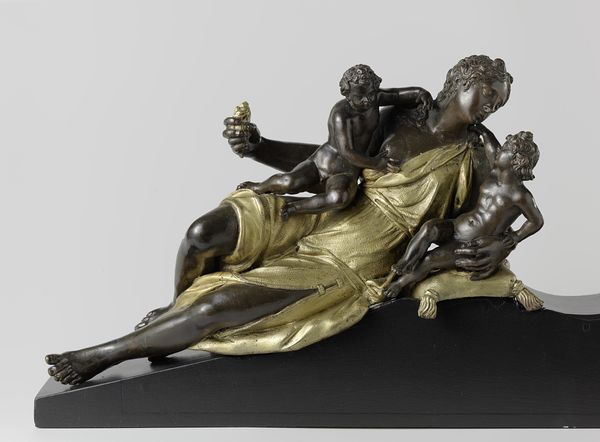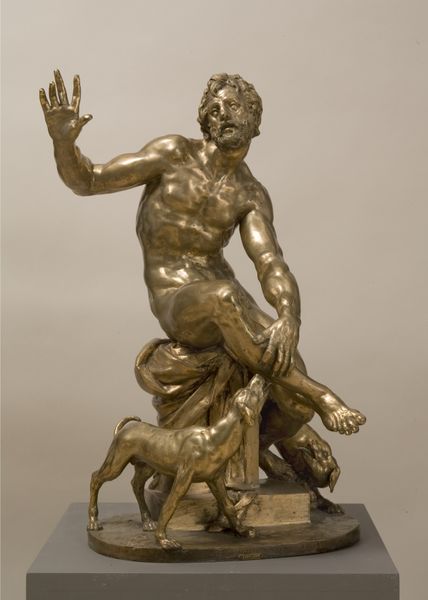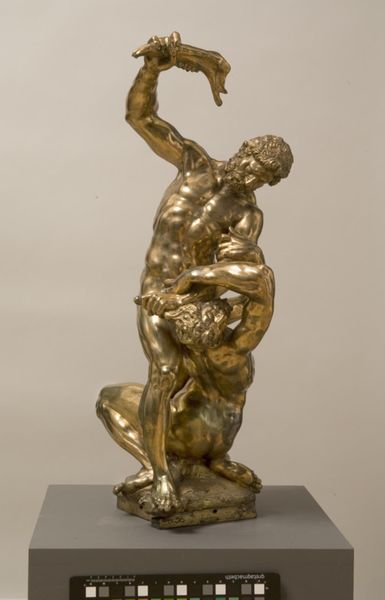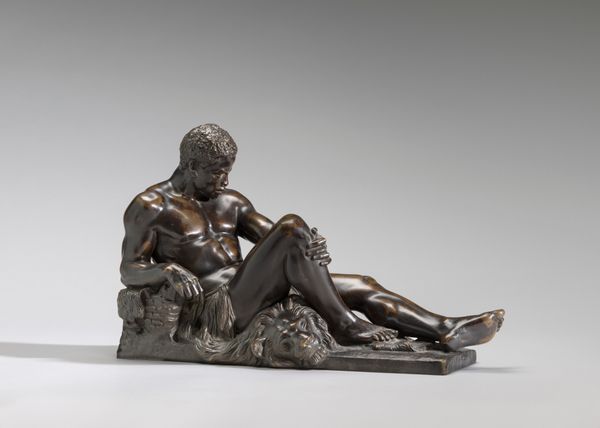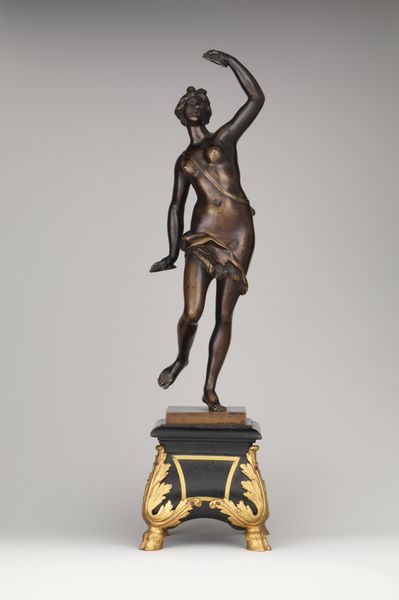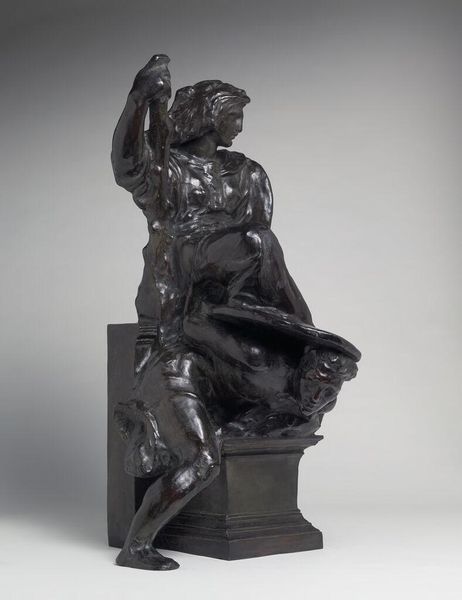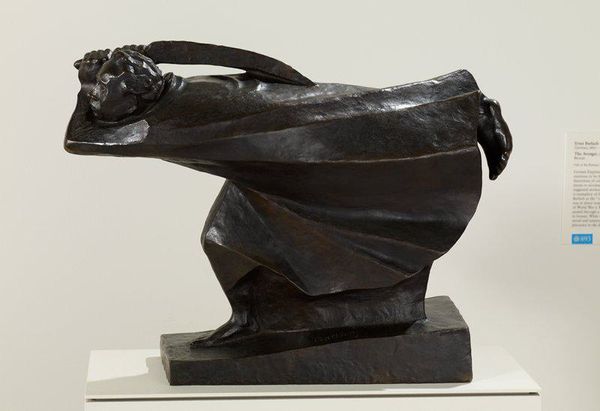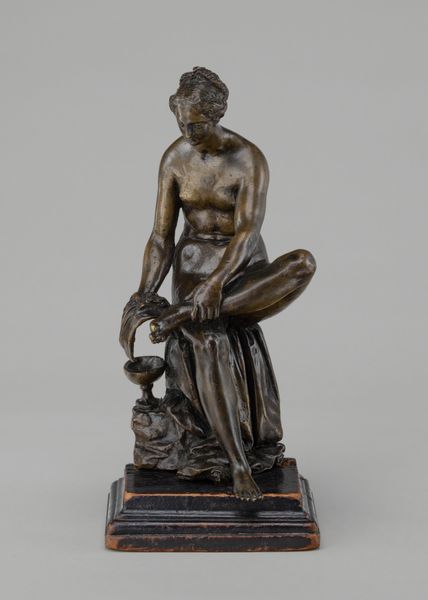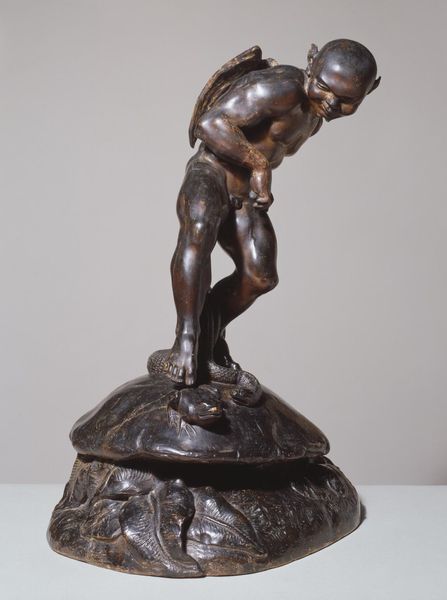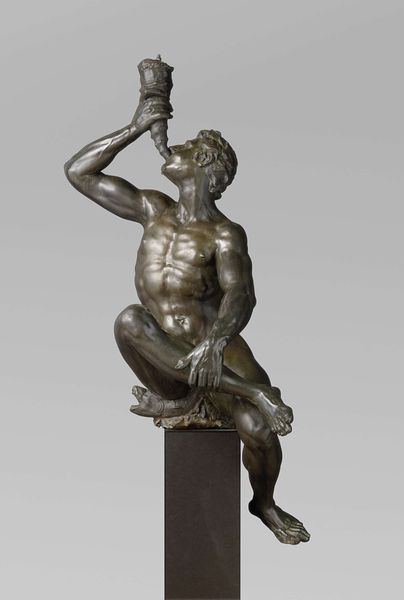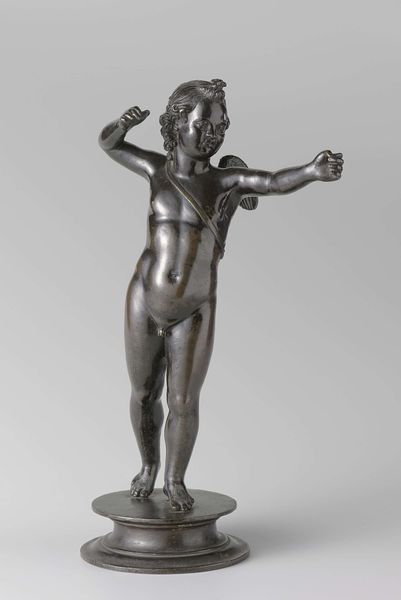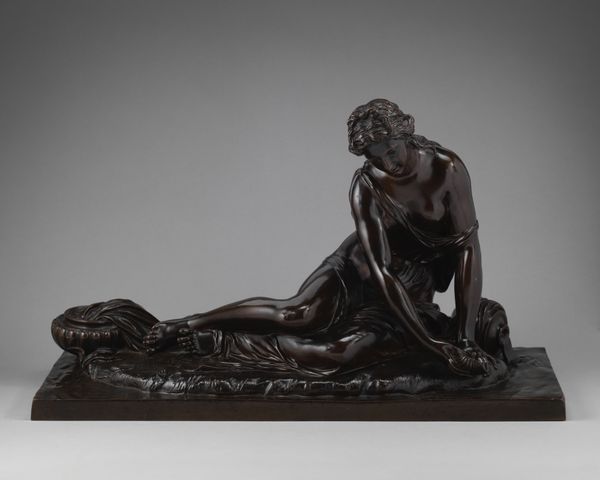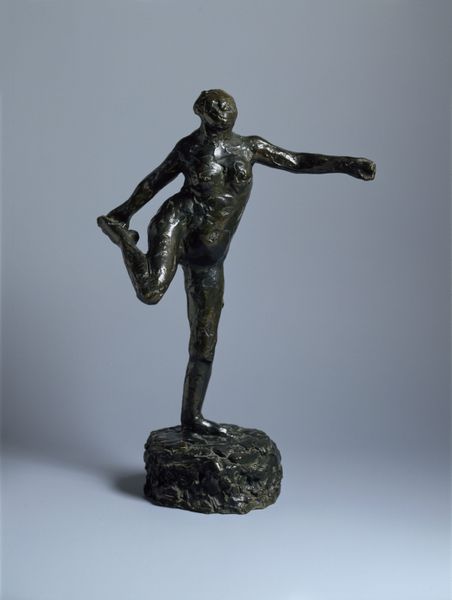
bronze, sculpture
#
baroque
#
sculpture
#
bronze
#
figuration
#
sculpture
#
history-painting
Dimensions: height 19 cm, length 37.5 cm, height 28.5 cm, width 81.0 cm, depth 17.0 cm
Copyright: Rijks Museum: Open Domain
Hubert Gerhard fashioned this bronze and partly gilded sculpture of Charity and Faith around 1590. It embodies the virtues of the Christian faith during the Counter-Reformation. The female figure reclines, draped in golden robes, a symbol of wealth and status in the late 16th century. The book she holds suggests learning and piety, reflecting the era's emphasis on religious knowledge. Gerhard, working in Germany, was influenced by Italian Renaissance ideals. The Catholic Church, a dominant institution, shaped artistic production by commissioning works that reinforced religious doctrine. Sculptures like this one were tools to promote a conservative social order. Art historians can delve into the archives of religious institutions and trace the patronage networks to fully understand the social function of the work. The meaning of such art is always contingent on the context of its creation and reception.
Comments
rijksmuseum about 2 years ago
⋮
From their attributes – two children and two Bibles – these two semi-upright women can be identified as personifications of the religious virtues of Charity (Caritas) and Faith (Fides). Together with the now missing third virtue, Hope (Spes), they originally formed the crowning element of a piece of furniture or an altarpiece.
Join the conversation
Join millions of artists and users on Artera today and experience the ultimate creative platform.
